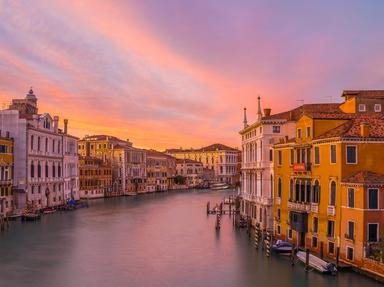Quiz Answer Key and Fun Facts
1. Monte Cristo is part of the Tuscan Archipelago. What is the archipelago's largest island, whose name should be familiar to anyone with an interest in 19th-century European history?
2. Part of the Maddalena Archipelago in northeastern Sardinia, the island of Caprera was for many years the residence of which celebrated hero of the fight for Italian reunification?
3. Once the site of a maximum-security prison, the island of Asinara off the coast of northwestern Sardinia is named after which indigenous mammal?
4. The Isole Ponziane, or Pontine, lie in the Tyrrhenian Sea, in the Gulf of Gaeta. To which Italian region (which also includes Italy's national capital of Rome) do they belong?
5. The largest of the islands off the coast of Naples is not only famous for its beaches, but also for its wines, gardens and hot thermal springs. What is its name, which might remind you of a bone in the human body?
6. Renowned for their beautiful beaches and dramatic scenery, the Aeolian Islands are home to Italy's third-highest volcano, a fiercely active mountain known by what appetizing (at least to Americans) name?
7. The island of Pantelleria lies midway between the southern coast of Sicily and the northern coast of which North African country?
8. The largest of the Pelagie Islands, located south of Sicily, is Lampedusa. In recent times Lampedusa has been deeply involved in what urgent humanitarian issue?
9. Located in the Adriatic Sea, off the coast of Apulia, the stunning Isole Tremiti are probably named after which geological phenomenon, unfortunately not uncommon in Italy?
10. Where would you go if you wanted to visit the glassworks on the island of Murano and the picturesque, rainbow-hued houses on the island of Burano?
Source: Author
LadyNym
This quiz was reviewed by FunTrivia editor
agony before going online.
Any errors found in FunTrivia content are routinely corrected through our feedback system.
